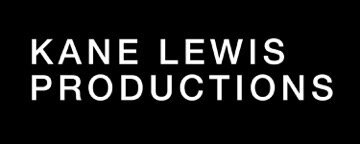LESSON PLAN 1
ABSTRACTING THE REGIONAL LANDSCAPE:
ARTICULATING A SENSE OF PLACE
Time: 10-14 hours
DESCRIPTION / OBJECTIVES:
Through a study of the local rural and/or urban environment, students will document and create imagery and compositions that reflect their personal knowledge of specific places. They will engage in a creative process that will lead to an original, abstract painting that addresses the subject with a selected painting medium using bold, symbolic brushstrokes to develop visual texture and forms.
MATERIALS:
• Paper
• 4”x6” for 5-10 initial sketches,
• 9”x12” for 3 preliminary paintings
• Heavy-weight 18”x24” for final painting• or 18x24” Primed Canvas
• Gesso for priming paper (optional)
• Pencil
• Black India Ink (or paint)
• Variety of Brushes: large bamboo, medium and large round & flat
• Paint: Tempera or Acrylic
• Acrylic Matt Medium (if using Acrylic paint)
• Masking Tape
• Pace Painting Images (click a number to see the painting):
1, 4, 13, 14, 29, 38, 44, 45, 46, 48, 61, 63, 64, 68, 69, 70
PROCESS:
• Research and Document (3-5 hours)
• Explore and examine the regional environment and geography: public records, field trips, web sites, and library resources.
• Take photographs and/or make sketches on site (5-10 sketches/photos).
• Draw what you saw! (1-1/2 hours)
• Return to the Art Studio where they will create three, quick, 9”x12” sketches from photographs and on-site sketches. “I don’t paint what I see. I paint what I saw.” –S. Pace
• Identify and draw a contour line with a black fine-tip marker, or a bamboo brush and ink around the major positive and negative shapes in each of the sketches. Select three drawings that have harmonious compositions. Look for repeated or related shapes and lines, rhythm and balance. Explain your decisions to the class or smaller group.
• Abbreviate the texture with symbolic brushwork: (2-1/2 hours) • Refer to the photographs and examine the major textures in the selected landscapes. Identify the patterns or repeated lines and shapes that create those textures.
• Create several, small contour line drawings of those shapes. “Recreate” those symbols with one stroke/mark. Use different size and shape paint brushes, and black paint (or ink) on a separate piece(s) of paper. Select the mark that best represents that symbol and repeat it, creating a “pattern”. The repeated symbolic marks will represent the essence of the original texture.
• Repeat the pattern of brushstrokes in the corresponding major shape(s) in your selected contour drawings. Create and assign symbolic marks/brushstrokes (textures) for all major landscape textures in each selected line drawing.
• Create an original painting that reflects a personal style
“Well the first stroke really says who you are.” –S. Pace: (3-4 hours)
• Select one of the three drawings. This landscape will be enlarged and “recreated” in color. Explain your decisions to the class or smaller group.
• Select a limited pallet, 2-4 colors, from specific color harmonies: Complementary, Analogous, Triad, Tetrad or Split-complement. Black and white may be used and mixed with pure hues to achieve tints and shades.
• Practice the symbolic brushstrokes that represent the various textures with specific color(s) on a separate piece of paper. The larger format may require larger brushes for making marks.
• Create the landscape painting on an 18”x24” format. The kind of paint may dictate the surface material (heavy white paper, primed canvas, gessoed paper). Tape paper to a flat surface allowing a 1/4”-1/2” border. The paint will be applied directly. No preliminary drawing on the canvas/paper (separate sketches only). The paint should be fluid. If it wants to drip, let it! Carefully remove the tape from the dry, completed painting.
• Compare the final 18”x24” painting and three 9”x12” paintings to the original line drawing and photograph.
• A student many want to create more than one larger painting of other compositions.
OPTIONAL JOURNAL/NOTEBOOK:
• The journal/notebook may be a document of the process that includes the initial photo or sketch, the contour drawings, all preliminary paintings, interviews, research, written documentation, and other writing activities.
OPTIONAL WRITING ACTIVITIES: (1/2 - 1 hour each)
• Write a two-paragraph description of the landscape that prompted the painting.
• Write a list of 10-15 adjectives, verbs and nouns that describe that landscape. Select six words from the list and write a five-line poem incorporating those six words.
OPTIONAL FIELD TRIP:
• Field trip to local museum or gallery to see Pace’s original works. See Sources/
Resources link for listing of museums and galleries.
STUDIO ENVIRONMENT :
• Students take an active responsibility in the learning environment:
• Use time productively
• Be considerate of others in the class
• Participate appropriately in class discussions and group activities
• Clean up workspace and equipment, and return materials to their proper place
EXHIBITION :
• Exhibit the work:
• Display the completed painting with preliminary photograph/sketch and the journal/notebook
ASSESSMENT :
• Students should be assessed on the following:
• Completion of DVD viewing and post-viewing assignments
• Participation in related discussions
• Completion of research and documentation
• Completion of initial drawing and brushwork exercises
• Level of completion of final painting(s):
• Creative Process
• Craftsmanship & Form
• Demonstrated Understanding of Subject & Content
• Effort & Progress• Use of project-specific vocabulary
• Appropriate use of time, materials and studio space

